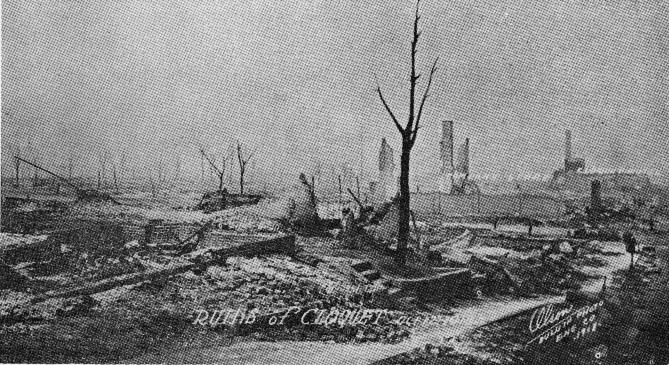piles of old railroad ties and rubbish were being burned near Brookston on a rail maintenance job, and it was from this, or from sparks from a locomotive there, that a bigger fire broke out and spread rapidly, blown along by high winds. People began to flee, but soon the flames seemed swifter than any means of flight. On one curve in the road between Moose Lake and Kettle River, nine automobiles with their 45 victims were found in a ditch, having skidded off the road in their haste. Some sought shelter in their potato cellars, or house cellars, but in most instances the flames reached them anyway.
Early in the afternoon, a train of evacuees from Brookston arrived at the Cloquet station, and many went to see it come - unaware that they, too, would be threatened by this disaster. Later in the afternoon the sky became blood red, and smoke began to penetrate everywhere. The wind increased, to over 70

Ruins of Cloquet after the fire in 1918.
miles per hour - later, papers from a lumber company office were found some 30 miles away, in Wisconsin; the same wind is said to have overturned automobiles. Duluth was covered with a half-inch thick layer of ashes. Toward evening, burning branches and parts of burning buildings began to rain over Cloquet. The whole city was reduced to ashes.
The following cities, towns and villages, all of which had many Finns living in them, were either totally or partially destroyed: Adolph, Aitkin, Arnold, Automba, Cromwell, Exeter Farms, Five Corners, Floodwood, Fond du Lac Reservation, Grand Lake,
637